#big Christmas trees aren’t a thing here for hemispheric reasons
Explore tagged Tumblr posts
Text
I don’t remember being much of a Christmas person before. Life always got in the way, like the time I had to sit a university entrance exam on December 23rd. I was either busy working retail or wrapping up the school year and/or being deeply, clinically depressed. I rarely had the time or energy to put up Christmas decorations. Eventually I stopped doing a Christmas tree and focused on my nativity scene instead, which felt more meaningful to me for a variety of reasons. And then my dad died the week before Christmas and I gave up on the whole thing altogether. It took me a while to feel like doing even that much again, and sometimes I don’t end up doing it until December 24th.
Can’t even remember what was the point I was trying to make. I feel a touch disconnected from the seasonal mood, I guess. My dad was fun to buy presents for and got me truly special things. It’s just not the same without him, that’s just all there is to it. We adapt and choose what makes the most sense
#christmas decoration#christmas#I miss my dad so much#big Christmas trees aren’t a thing here for hemispheric reasons#and we couldn’t afford artificial ones#peak low budget experience was getting a pine branch and sticking it into a giant tin filled with stones and hang ornaments from there#this was not from the cute decorative pine species but rather the cheap grown for celulose pines kind#powdered milk tins were the best for this sort of thing#you’d wrap the tin in the prettiest wrapping paper you could find#then hope it would get too hot before Christmas or else it’d go brown on you#anyway#texto
8 notes
·
View notes
Text
Haere mai, statistical computing folks.
Later this year, Auckland is hosting the Asian regional meeting of the International Association for Statistical Computing. For the benefit of conference-goers, here’s a brief introduction to the locale.
Nomenclature:
The Owen G. Glenn Building (OGGB, or building 260, in university abbreviations) is named after Owen G. Glenn. He’s a New Zealand businessman and philanthropist.
Auckland is named after George Eden. The subantarctic Auckland Islands were not named after George but after his father William Eden.
New Zealand is named after the Dutch province of Zeeland; the lack of resemblance is quite striking.
Formally,(Actually It’s more complicated) the country is Aotearoa New Zealand, with Māori and English names of equal status. The city has a Māori name, Tāmaki Makaurau, but its primary name is the English one.
The Māori language (te reo Māori) is fairly easy to pronounce roughly right. The consonants are the same as in Western European languages (or pinyin), except that ‘wh’ is pronounced /f/. The vowels are pure, as in Spanish or German or Italian. The bars above vowels mean they are about twice as long. There isn’t strong stress on any syllable.
People over 30 who grew up in a place with a Māori name may well use an older, anglicised pronounciation for it, but there’s been a trend away from that. In particular, weather forecasts and airport announcements will typically use something relatively close to the Māori pronounciation.
Mountains
Auckland is full of little pointy hills that look like baby volcanoes. They are baby volcanoes. One of them, Maungawhau/Mt Eden is data(volcano) in R. Every few thousand years, a new one pops up at some unpredictable location in the Auckland area, erupts briefly, and then stops. There’s only a few of these volcano fields around the world — another is the (extinct) Boring Volcano Field in Portland, Oregon. The Auckland one is still active and so is less boring.
The most recent and largest volcano, Rangitoto, is just outside the Waitemata Harbour. There are ferry rides a few times a day, and it’s a nice walk to the top. Parts of Rangitoto are still bare rock, parts are pohutukawa forest, and there’s some areas on the south side that have developed proper soil and a variety of plants.
Auckland Domain, just across the motorway from the conference, is the crater of the closest volcano; Mt Eden is a short bus ride away.
Peoples
New Zealand was the last worthwhile land mass to be settled — about 800 years ago, by Polynesians in big ocean-going canoes. You occasionally see people raising alt-theories of earlier settlement by, eg, Celts, but there’s scientific consensus and fairly wide social endorsement for the view that these people are probably racist whackjobs.
The British arrived in increasing numbers in the early nineteenth century, with the usual consequences — though the Treaty of Waitangi was somewhat more successful than most attempts to negotiate with the British. Recently, the NZ government has settled treaty claims with many iwi (tribes, clans).
At the start of the twentieth century, about one in four residents of New Zealand was an immigrant. The proportion decreased to a minimum of about one in six in the 1940s and has been slowly increasing again. What’s different this time is where the immigrants are from: many are from the Pacific Islands and from Asia. Auckland, in particular, has about 40% immigrant proportion, similar to New York and London. The increase in diversity has gone reasonably well by international standards, but there are certainly some people who aren’t happy with things being different from fifty years ago.
Plants
The trees with dense, gray-green leaves are pohutukawa. Some of them might be flowering by the time of the conference. Stylised versions of the red spiky puffs of flowers are starting to displace winter-based symbols for Christmas in Auckland. You’ll probably hear people worrying about myrtle rust, a South American fungus that has recently arrived; no-one knows how much damage it will do.
Many of the conifers you see are native: rīmu, tōtara, kauri, kahikatea (native plants are typically known by their Māori names). The things like enormous fake Christmas trees are Araucarias; not native but regional — A. heterophylla, ‘Norfolk Pine’ from Norfolk Island and A. columnaris, ‘Cook Pine’, from New Caledonia. There are also two conifers from the Monterey area of California: “radiata” (Pinus radiata) and “macrocarpa” (Cupressus macrocarpa). They grow much more vigorously here.
The Dr Seuss trees looking like bunches of grass on top of tall trunks are Cabbage Trees (Cordyline australis). The name comes from the edibility of the new stem and the roots, rather than their appearance.
Tree ferns are native; the Waitakere hills to the west of Auckland are packed full of them. They’re culturally important: the major women’s professional sports teams are named after them, and the unfolding fern frond (the ‘koru’) is a widely-used symbol of growth.
Kauri are massively huge living-fossil conifers that used to be common in Auckland and points north. Sadly, a lot of the nearby ones were turned into houses, and they grow slowly. Some of the ones on the west side of Northland (day-trip distance) are almost as big as redwoods (Sequoiadendron).
New Zealand Flax is known and loved and/or hated by gardeners around the warm temperate world. It was a traditional fibre source, and the nectar was used as a sweetener. It’s not related to the `true’ flax of the northern hemisphere; it’s a lily.
Birds
New Zealand is famous for its weird native birds. The ones you see around you in Auckland mostly aren’t them. You can easily see a lot of stupidly-introduced English birds: sparrow, starling, pigeon, blackbird, thrush, chaffinch, goldfinch. The cute urban parrots are Australian, as are the magpies and the tiny green silvereyes. The leggy blue and black pūkeko are ‘courtesy natives’ — they arrived before Europeans but after Māori — but they are the same species as the ones all over Europe and Asia. The large black gulls actually are a native species, but the differences would only matter to another gull.
You might, in the parks near the University, see the kererū, the big native pigeon. It’s about twice the size of the feral pigeons, and colored purple, green, and white. There’s a few fantails (pīwakawaka) around, which are very cute.
There’s one common, distinctive, native bird. If you walk past a tree that sounds as if it’s full of old 28k dial-up modems, you have met the tūī. They’re about the size of a blackbird, with a puff of white feathers at the throat, and they’re boisterous, musical, and give the impression of being slightly drunk.
If you want to see more native birds, the day trip to Tiritiri Maitangi Island is highly recommended. You still won’t see kiwi (they are brown, shy, and nocturnal, so are essentially unobservable) but you will likely see saddlebacks and kākāriki and black robins and hihi and bellbirds and kēreru and maybe kōkako and takahē.
Death Rays from Space (update)
Auckland has a relatively mild climate, since it’s surrounded by water, but we’re the same distance from the equator as Las Vegas or the Greek islands. There’s also less continental dust in the atmosphere here than a lot of places. It is surprisingly easy to get badly sunburned.
Foods
The best-value inexpensive food in central Auckland is in Asian restaurants, and particularly in Asian food courts. Non-foodcourt examples especially worth mentioning are Selera (Malaysian, in Newmarket) and Chom Na (Thai, downtown). Another inexpensive option is fish and chips, which is as good here as anywhere in the world: it’s worth paying extra for snapper if it’s fresh. A lot of pubs also have reasonable food.
The best Indian food is in Sandringham, about 6km south, but there are some good places at the top of the hill, along K Rd (Satya, in particular)
Mexican food is not recommended: it tends to be either bad or expensive. Pizza mostly isn’t great (with a few exceptions). Otherwise, any restaurant that can survive in Auckland is unlikely to be terrible.
At the higher priced end of the market, there are a number of good restaurants on Fort St. Ima does family-style Israeli food very well. Indochine Kitchen is Vietnamese, a bit noisy but good flavours. Beirut is posh Lebanese. Cassia is modern Indian food and was the Restaurant of the Year last year. There are lots of well-regarded places in Ponsonby that I don’t know much about.
At the top: for high-end French-style food, The Grove is really excellent; I’ve heard good things about The French Café, but have never been there; Grand Harbour does Hong Kong-style seafood and is by acclaim the best Chinese restaurant in the country, but I’m not really qualified to judge whether it’s worth it. The revolving restaurant on the SkyTower is expensive because it revolves; unlike some revolving restaurants it does actually have good food.
Finally, Giapo, on Fort St, does absolutely over-the-top decorated locavore gelato. You have never seen anything like it.
1 note
·
View note
Text
December in the Southern Hemisphere
Merry Christmas from Buenos Aires, Argentina! The last month has been absolutely glorious. Details below <3
Getting Here
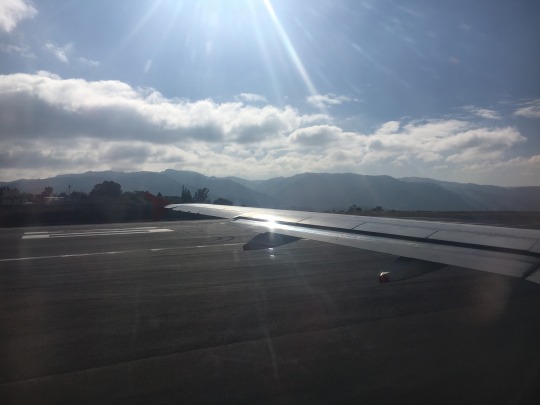
Getting to Buenos Aires was a 24+ hour journey that involved 3 different flights and uncomfortably long long layovers. Walking out of the airport in BA was the best feeling because it meant I was that much closer to my bed.
The flatness of the land around me as we drove down the highway for the first time blew my mind. For all of August - December 1, I was constantly surrounded by mountains and to suddenly step out of that was like “omg.” The flatness was welcome though. I am more accustomed to “flatness.” It feels more like home to me than the mountains.
Getting Settled:
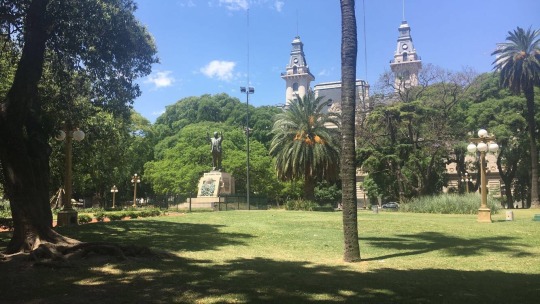
My apartment is amazing. I have written it a million times before but once again, the physical space I call home is very important to me because having a place that I feel comfortable and at peace in at the end of the day is invaluable. I spend most of my time socializing and while I love it, it can also be exhausting. The best feeling is getting home, turning up some music, and cooking dinner all by myself (as weird as it sounds and as strange as it feels to type it.) Small things that add to my happiness: a powerful AC for the 90 degree summer weather, an oven, cable TV, and strong water pressure, all for the first time since leaving the US. These are tiny details that I feel perfectly fine without but I also can’t deny that having them is a benefit that I enjoy.
The neighborhood I am in is also really great. I live beyond the city center in a working class neighborhood where things are more affordable, there aren’t many tourists, and life is a lot more calm (relatively). I am at two major intersections so I have easy access to the rest of the city with many bus options. Everything I may need on a regular basis is within walking distance (i.e. laundry, supermarket, take-out, entertainment, etc).
Much like Quito, Buenos Aires is a massive city with a million and one things happening at all times. The public transportation system is extensive and complicated at first glance but manageable. I am proud to say that I have yet to get lost on a bus. One of the things that has contributed to this is that you have to tell the driver where you are going when you get on the bus so that they can charge you appropriately. This means that it is basically impossible to get on the wrong bus because if they don’t stop where you are going, they will tell you so and let you off. They also have a metrocard equivalent called a “SUBE” card which is rechargeable almost anywhere.
There are a lot of things about Buenos Aires that make me think of New York. For example, the grid-like nature of the city blocks, the large avenues, the public transportation system, and the liveliness of the city after dark. However, one very different detail that I love is the way that green spaces are incorporated into the city. BA has done such a good job at making the city feel so big and refreshing despite it being a major urban center. Incredibly tall trees line avenues, in every community there is at least one green plaza, and there are some huge parks near downtown.
Constructing a Meaningful Schedule:

I have been more busy in BA that I have been in my entire Watson year so far. My schedule is jam packed and when I am not doing something Watson related, I am studying for the MCAT and out there being a tourist. Here are the activities that fill my days:
Hospital De Los Niños:
A lovely doctor I met in Ecuador connected me to a doctor here in Argentina and as a result, I am able to spend time in a major public pediatric hospital 4 mornings a week. I am rotating exclusively in respiratory endoscopy and pulmonology. This is an ideal place because as I have mentioned in previous posts, my Watson question has evolved to concern chronic care management among socially vulnerable patient populations. Respiratory diseases such as cystic fibrosis, are life-long medical battles that often require a lot of hospital intervention, follow-up, and care on the part of parents. Some of the questions that have already come up:
How do people find and pay for 24-hour caregivers for their children?
How do parents manage work when there child is hospitalized for months at a time?
How do parents manage living at the hospital for months at a time?
How do parents make sense of their roles as not only parents, but also as medical experts (and often interventionists) with respect to the conditions their child has?
How do children make sense of their disease and cope with it?
What happens when insurance won’t cover a necessary respiratory device that a child needs before they are able to get discharged?
What are the emotional battles a parent and child must overcome with respect to dealing with a chronic progressive medical condition?
Manos Abiertas:
This is a foundation that I found online that has a lot of social programs throughout Argentina. I reached out to them with the desire to serve in the capacity of a volunteer. They got back to me and requested an interview. For whatever reason, it never occurred to me that this was a serious interview and as a result, I was extremely unprepared and felt disappointed in myself for not representing myself as well as I know I can. I am usually good with interviews, even if they are impromptu. However, I learned that an interview in spanish is VERY different from one in english. I did not have the words I wanted readily available nor the confidence that english usually affords me.
Somehow, they decided to let me move on to the next interview, one which I was EXTENSIVELY prepared for and that I think made up for my first because starting next week, I will be a volunteer at one of the organization’s palliative care homes! I will be helping out in the kitchen on Thursday afternoons and working as an “acompañante” on Friday afternoons. As an acompañante, I will spend time with the residents. For those of you who may not be familiar with the concept, palliative care is when curative treatments are no longer available or an option and therefore, patients are treated with the intention of alleviating pain and helping them enjoy their last days. I am really excited to work with this organization because even though it may sound somber, their work is all about helping people die in peace and with dignity. The patients they serve are coming from the worst of social circumstances and the opportunity to have a warm bed, a hand to hold, and the support of round-the-clock staff allows for a patient to feel loved during what may be one of the most difficult times in their lives.
In a lot of ways, it is an honor to have the opportunity to do this job. I am really looking forward to it!
Tzedeká:
This is another organization that I found through a google search and reached out to because I was interested in what they were doing. I have mentioned before that one of the biggest surprises of my Watson has been the realization that access to medication is such a massive problem everywhere. That said, this organization interested me because their health arm focuses on collecting and redistributing essential medications, at no cost, to those who need it most. They have groups of volunteers who are trained to classify and sort medication at their centers. I am planning on helping in this capacity. I was supposed to start last week but a scheduling conflict made it impossible. I will hopefully get started next week though. Updates on that to come. I am excited for this position because it will allow me, albeit in a small way, to contribute to work that helps close what I will call the “medication gap.” (whether or not that is an actual academic term I do not know)
Dance:
I came to Buenos Aires with the explicit desire to find another dance company where I could meet people, destress, and express myself. I arrived on Saturday and was dancing on Sunday. I “hit the ground running” with respect to this topic. I missed dancing in Guatemala. I had a plan for where I wanted to dance but the travel time ended up being too much and instead, I chose to stick to a company that is a 15 minute bus ride away. Classes run late but the proximity of the studio allows me to take full advantage while still being able to get home quickly and safely. The good news is that it is a great space and the people are genuine and welcoming. The bad news is that the rhythms I love most are offered at times that are very inconvenient for me. As a result, I don’t get to dance as often as I would like. Nonetheless, the sense of community, the chance to let go of some energy, and the joy that comes with dancing has helped ground me here in BA.
MCAT Prep Progress and Medical School Things:

There is not a single day that I don’t ask myself if I still want to be a doctor and each day, I seem to find a new reason why the answer to that is yes. This has really propelled my MCAT studying because as much as I hate physics, for example, I get to live and see what I am working towards each day, and that allows me to proceed with a strong resolve. These last two weeks have been dedicated to figuring out what kind of study structure is realistic and works given my schedule and I think I found one. Additionally, I have found a handful of places where I can get stuff done between commitments. I took a diagnostic test and have a LONG way to go in order to reach my percentile goal and that is somewhat intimidating. However, I just keep trying to remind myself that I make things happen. I want this more than anything so I will work to make it happen: it is who I am and how I operate.
I am very conscious of the Medical School Application process and am getting ready to reach out to potential recommenders and starting to think about what I want to write about in my personal statement. I can’t help but feel like this is the most important personal statement I have ever written and if it actually is, I don’t know. All I know is that the pressure is real! I don’t have a clue what I will write but I am confident I will figure it out.
Notable Moments:

- Going out to a club alone and making new friends who I now talk to daily
- Watching a baby be delivered for the first time in my life (!!!)
- Feeling invincible because I am embracing my sexuality and feel proud of who I am, maybe for the first time.
- Witnessing a coin get taken out of a child’s esophagus and getting to keep the x-ray as a reminder.
- Looking at a chest x-ray and actually understanding what I am looking at and successfully identifying what was wrong.
- The very humbling experience of being present while a mom broke down after her baby had an invasive procedure done.
- Getting new glasses for the first time in like SEVEN years (underestimate for sure).
The Joys of Being a Tourist:
BA is massive with a million places to visit and lots to do. I have not even come close to doing all that I want but knowing that there is so much more helps keep me motivated and curious and feeling good. It is amazing how the city could simultaneously be an architectural wonder, a nature-filled paradise, and a coastal beauty.
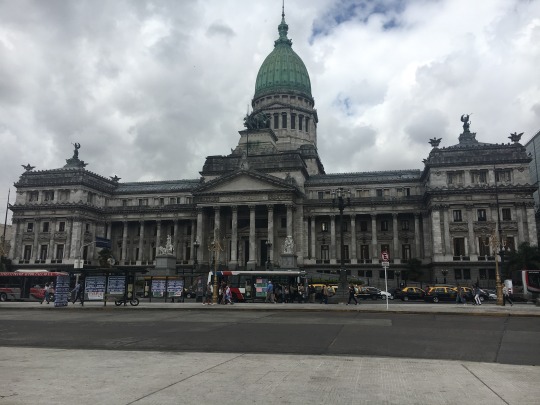

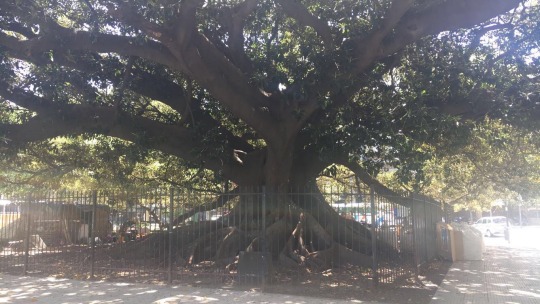
The Challenge and Beauty of Spending the Holidays Far Away:

On December 23rd I found myself scrolling through snapchat and seeing people’s stories about going home really got to me. While it wasn’t the first time I felt a nudge of homesickness, it was the first time since leaving that I really wanted to go home. I didn’t cry but I came close, also for the first time since leaving. I decided to go outside, got a frap, did some quick MCAT review, and then walked around town. The crowds in the neighborhood were abnormal but last minute christmas shopping brings everyone out of their normal evening routine. The sense of liveliness that filled the streets helped lift my spirit and somehow, helped me feel less alone.
On Christmas Eve I woke up feeling a lot better and more committed to finding the beauty in spending the holidays with new friends and new families. I spent the first half of the day bumming around binge watching gossip girl. I spoke to my family later in the afternoon and got to hear about their christmas prep. Listening to my siblings fuss about what the wrapped boxes may or may not have held made me so happy because it was comforting to see how some things just don’t change. I felt energized by our conversation and blasted music as I got ready to head out.
One of the doctors I work with picked me up and we headed out to her friends house, where her family was gathered. I was worried about feeling like an outsider and my presence creating awkwardness. However, to my surprise, I felt welcome and comfortable. I got to play with two beautiful dogs, eat delicious food, teach bachata, and most importantly, laugh a ton.
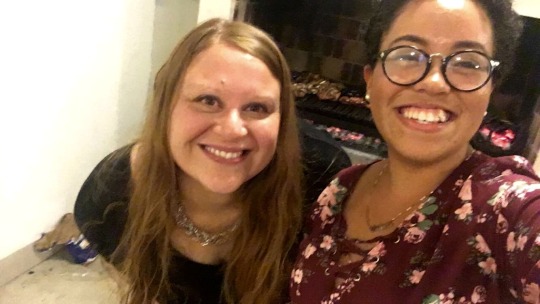
When I got home, I couldn’t help but feel so profoundly grateful for the people that have filled my Watson days with love, joy, and unforgettable memories. It is a true privilege to step so far into the unknown and be constantly reminded of beauty and power of the human spirit that connects each of us.
Things I’m Looking Forward To:
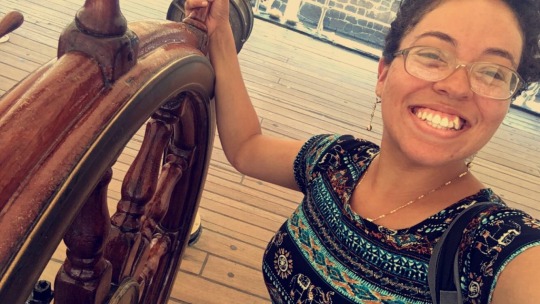
- I am in the final stages of the interview process for a job in San Francisco for next year. I am incredibly excited about the work the organization does, the role I could play, and the broad impact of the position. Cross your fingers that all ends well. I will keep you updated!
- I can’t believe how quickly time is passing but I am definitely excited for all the adventures and experiences that 2018 will bring. Believe it or not, I am close to the halfway mark of my Watson! How that happened? I have no idea.
0 notes